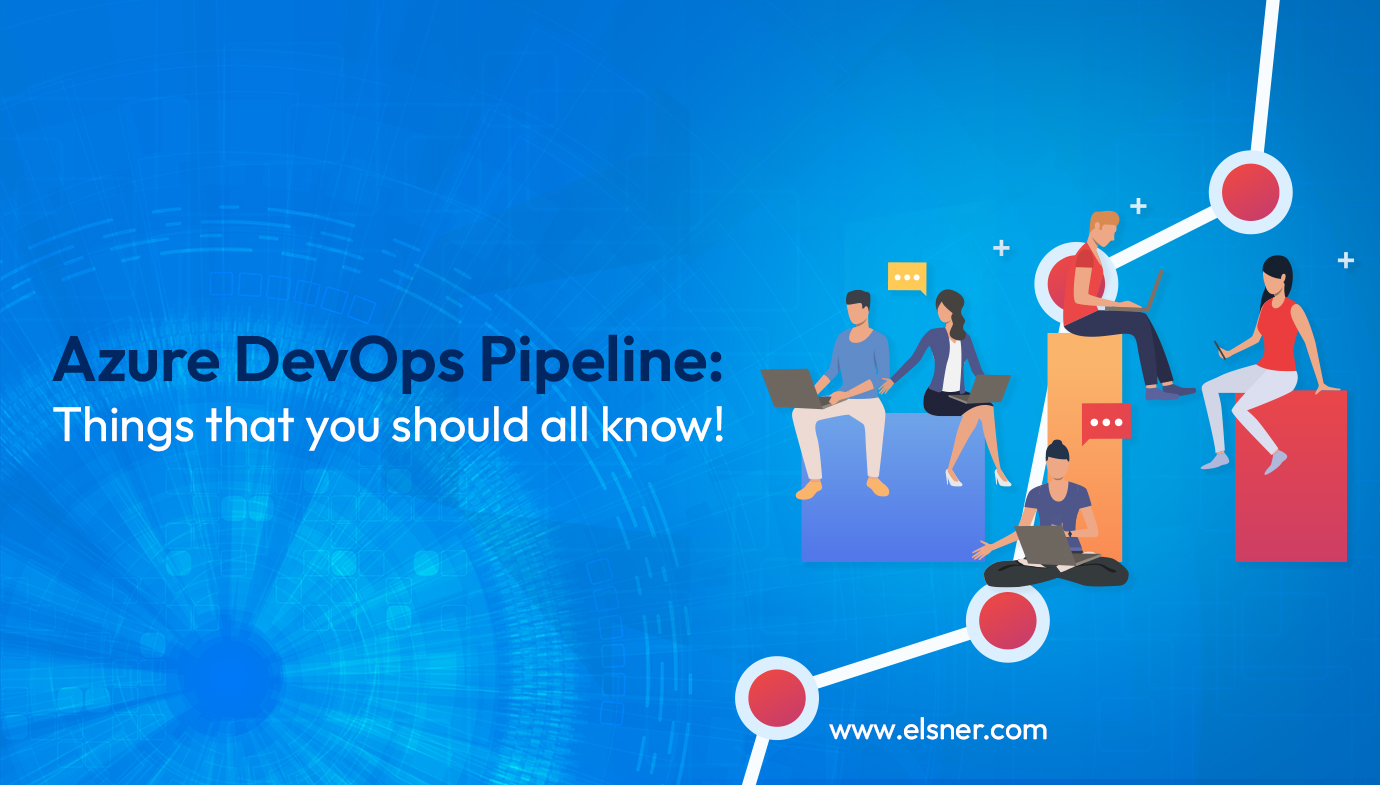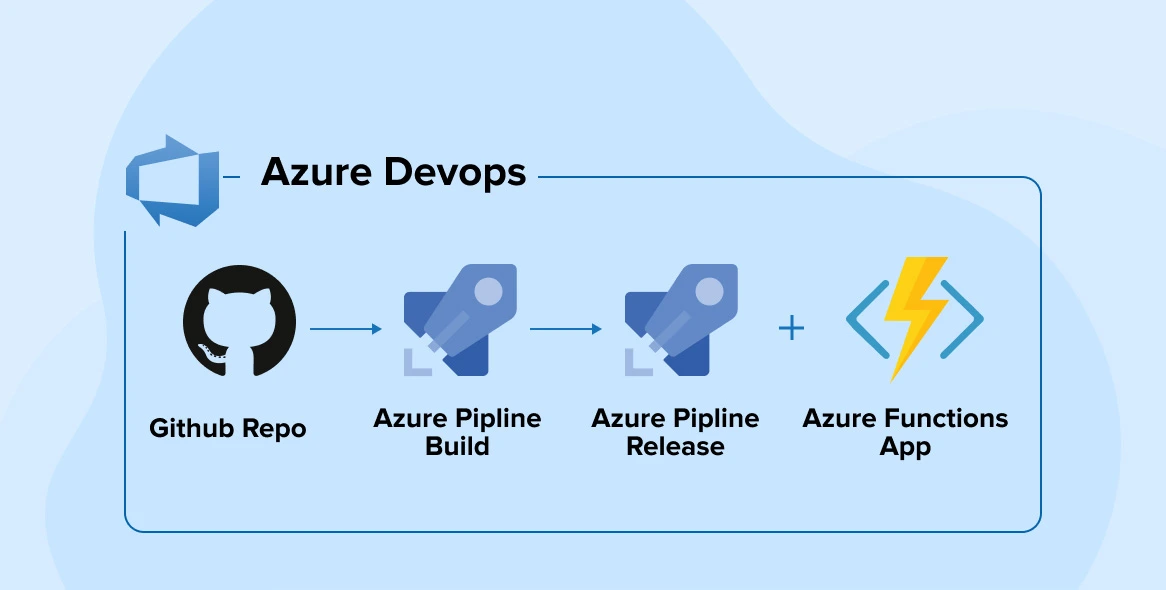Azure and DevOps have both been in demand. Therefore, it’s common how these technologies have advanced.
Microsoft’s Azure DevOps is a platform for continuous delivery. With Azure DevOps Services, you can quickly deploy various languages on numerous platforms and in the cloud. There could be a lot of confusion around the Azure DevOps Pipeline. Be it about the ci/cd pipeline or more technical specifications?
What is the Azure DevOps Pipeline?
[Image Source: https://bit.ly/43Eqlax]
Today, automation is the characteristic that all enterprises are searching for, and that is what Azure DevOps Pipeline is all about. More and more businesses aspire to reduce human involvement and automate error-free processes.
These pipelines aid in automating the procedures that programmers use to write and distribute code to various platforms. The entire technology completely automates the system and gets rid of errors. Additionally, the Azure DevOps pipeline results in precise, slick, and rapid procedures.
The Azure DevOps pipeline supports programs created in Python, Node.js, Java, XCode, JavaScript, Go, and Net. The adoption of source control is also required for these applications. The pipeline’s foundation is a continuous integration and delivery system that continuously creates, evaluates, and releases new code versions.
Various Factors of the Azure DevOps Pipeline are:
1. Pipeline:
It is a workflow that outlines the steps we will take to complete our test, build, and deployment tasks.
2. Agents and Agent Pools: An agent is an installable software that does one task at a time. Additionally, agent pools can control groups of agents rather than individual ones.
3. Step: The step is the lowest component in this Azure DevOps process. A step is nothing more than a ready-made script that is provided as a convenience.
4. Job: A stage may have one or more positions that agents carry out. It denotes the conclusion of an action plan.
5. Trigger: It simply implies pushing something or carrying out any action. It instructs the pipeline when to operate. The triggers in a pipeline to execute after a push to the repository at predetermined periods power the full automation.
6. Validations: Before deploying something, several verifications must be outlined in checks. This helps to streamline a workflow and eliminate errors.
What are the top benefits of Azure DevOps Pipeline?
- Open Source Software
Azure DevOps integrates deeply with commercial and open-source solutions. Since it is an open-source platform, it has emerged as a leading option. There are hundreds of extensions in the marketplace, so a tool probably exists even if Azure developers don’t now support anything.
- Multi-lingual Support
All popular programming languages, including Java, Ruby, C, PHP, and many others, as well as a wide range of application types, can be used with the Azure DevOps pipeline. Linux, macOS, and Windows are also included. A shared culture supporting all important types is essential due to the wide variety of programming languages and application types.
- Fast Deployment
There is much room for improvement throughout the phases of development and testing. The developer can specify numerous stages in each of these phases to regulate the project’s quality before going on to the following one using the Azure DevOps pipeline. It ensures that the code is error-free and optimised.
- Numerous Upgrades
The Azure DevOps pipeline’s frequent upgrades are one of its most notable features. Azure DevOps is regularly updated because it is managed by Microsoft, ensuring it has access to the newest capabilities.
- Improved collaboration
DevOps fosters team unity by enhancing cross-departmental communication and collaboration. As a result, workers develop strong working relationships. And better Azure DevOps Pipeline implementation and enhanced productivity result from improved communication.
- Low-Cost
The widely utilized Azure DevOps pipeline service has benefited numerous enterprises. The cost for Azure DevOps is another fantastic feature. For some applications, the Azure DevOps pipeline is free.
- Configurable
Azure can simply integrate with all of Microsoft’s products because it is a Microsoft product. Additionally, the fact that Azure is an open-source technology makes customization simpler. It gives more flexibility to customize.
Conclusion
How successfully a corporation employs technology can be used to gauge performance? With the Azure DevOps platform, a business can get everything it needs in a single integrated solution, including continuous monitoring, integration, and testing.
Azure DevOps is a great tool for building a CI/CD pipeline for several reasons. It makes it possible for Azure DevOps deployment Pipeline services providers to interact and work with different teams.
It expedites the delivery of the goods. Elsner might help if you’re looking for a reliable Azure DevOps pipeline provider. We have a solid history of providing top-notch services.

About Author
Pankaj Sakariya - Delivery Manager
Pankaj is a results-driven professional with a track record of successfully managing high-impact projects. His ability to balance client expectations with operational excellence makes him an invaluable asset. Pankaj is committed to ensuring smooth delivery and exceeding client expectations, with a strong focus on quality and team collaboration.





